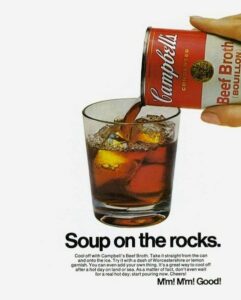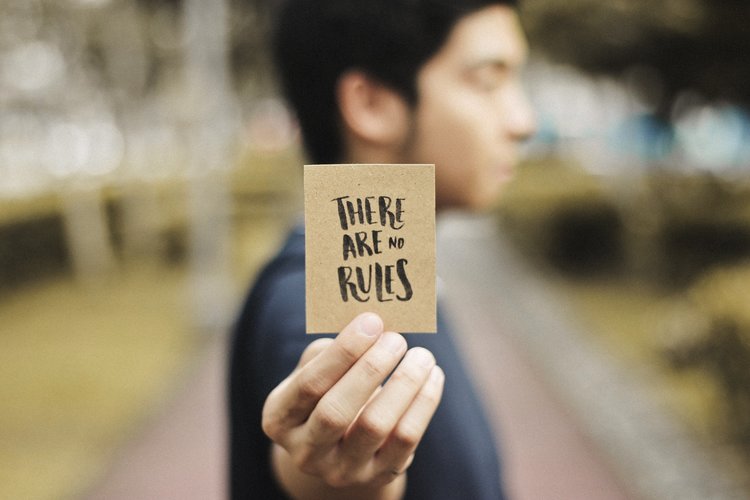Out-of-home advertising (OOH) — also known as outdoor media — is the marketing you see…
3 Reasons to Break the Rules of Advertising
Busting down barriers and breaking the rules may not work so well if you’re a doctor or lawyer. So welcome to the world of advertising and creative production, the perfect place for people who don’t care for or play by the rules. High quality, authenticity, and wickedly unorthodox content is achieved by pushing toward, and through, the edges of what has already come before.
 But success is limited when we’re pushing at it alone. Clients and their creative agency need to work in tandem, as partners for the long-haul. It may feel that all the power is with the client because they determine the budget and can nix an idea with award-winning, industry-shifting potential just like that. Remember, though, that clients depend on agencies to provide creative direction, brand strategy, verve, concept development and inspiration. There’s no crystal ball, but leveraging clarity, curiosity and creativity is a surefire way to produce fresh and memorable content. In the words of Leo Burnett, “Curiosity about life in all aspects, I think, is still the secret of great creative people.” So push toward the risky edges, and take the leap to move beyond what you thought was possible.
But success is limited when we’re pushing at it alone. Clients and their creative agency need to work in tandem, as partners for the long-haul. It may feel that all the power is with the client because they determine the budget and can nix an idea with award-winning, industry-shifting potential just like that. Remember, though, that clients depend on agencies to provide creative direction, brand strategy, verve, concept development and inspiration. There’s no crystal ball, but leveraging clarity, curiosity and creativity is a surefire way to produce fresh and memorable content. In the words of Leo Burnett, “Curiosity about life in all aspects, I think, is still the secret of great creative people.” So push toward the risky edges, and take the leap to move beyond what you thought was possible.
With that said, here are examples of when, why, and how breaking the rules (and sometimes following them) can help you achieve your next level of greatness:
old tricks still work

 In 1972, legendary ad executive David Ogilvy produced the infamous “Soup on the Rocks” Campbells ad campaign, turning on its head the consumer’s perception of how and when a product should be served. The ad, which heavily emphasizes a simple headline and clean art direction, exemplified the desire to turn the mundane – a can of beef bouillon – into something otherworldly – a fresh, enduring, even sexy experience. In order to capture the attention of Campbell’s audience, Ogilvy created a new narrative for an already familiar product. Complexity is not an essential ingredient to a successful campaign, but rather a clear narrative and the ability to (re)frame how consumers perceive a product and experience a brand. As Leo Burnett said, “Make it simple. Make it memorable. Make it inviting to look at. Make it fun to read.”
In 1972, legendary ad executive David Ogilvy produced the infamous “Soup on the Rocks” Campbells ad campaign, turning on its head the consumer’s perception of how and when a product should be served. The ad, which heavily emphasizes a simple headline and clean art direction, exemplified the desire to turn the mundane – a can of beef bouillon – into something otherworldly – a fresh, enduring, even sexy experience. In order to capture the attention of Campbell’s audience, Ogilvy created a new narrative for an already familiar product. Complexity is not an essential ingredient to a successful campaign, but rather a clear narrative and the ability to (re)frame how consumers perceive a product and experience a brand. As Leo Burnett said, “Make it simple. Make it memorable. Make it inviting to look at. Make it fun to read.”
more is not always better
Another legend in the advertising world, Rosser Reeves, seemed to anticipate the billions of ads that would bombard us in the new millennium. Even back in the dark pre-internet days, when a mere hundreds of thousands of ads were displayed to consumers, Rosser remarked, “There is a finite limit to what a consumer can remember about 30,000 advertised brands.”
A new mother isn’t looking for profanities in diaper ads, the same way beer commercials don’t feature babies (except puppies). The message? Don’t fall into the trap of advertising in every way to everybody. Develop ad copy that emphasizes your unique brand story, without getting caught up in the allure of following the industry leader or competitor. Don’t lose your posse by going after everyone else’s – know that what is right for others may not be right for you. With a solid brand strategy and understanding of who your audience is, you’ll be more comfortable testing new ground and taking liberties when it comes time to produce creative content.
aspiration isn’t nearly enough
Since the days of Cleopatra and perhaps before, advertising has presented an idealized version of culture, society and the products within – from ice cream and scotch to mascara, dating, and office layouts. The hard and fast rule that aspiration is an essential ingredient to successful ad campaigns was paramount. But by the time the new millennium rolled around, this adage needed testing, if only a little bit.
In 2004, Silvia Langnado, Global Brand Director for Dove at the time, came along, upending the traditional beauty-industry notion that consumers bought into a brand based on the aspiration of looking a certain way and improving their image. Instead, Langnado launched the “Real Beauty” campaign, incorporating women of all shapes, sizes, and ethnicities along the way. The campaign led to the eventual establishment by Unilever of the Dove Self-Esteem Fund, raising greater awareness around the pitfalls of advertising in the beauty-industry and its impact on girls’ self-esteem.
“There’s no way you can sell beauty without aspirations, they told me,” said Langnado. And while aspirations weren’t entirely removed from the Dove campaign, Dove did find a way to tap into the emotional heart of consumers, without compromising the core messaging or growth of a brand. In doing so, Dove created a global conversation, community, and call to action – ultimately something unexpected and much more lasting than a single campaign. The company listened to their customers and in turn, created a movement.




